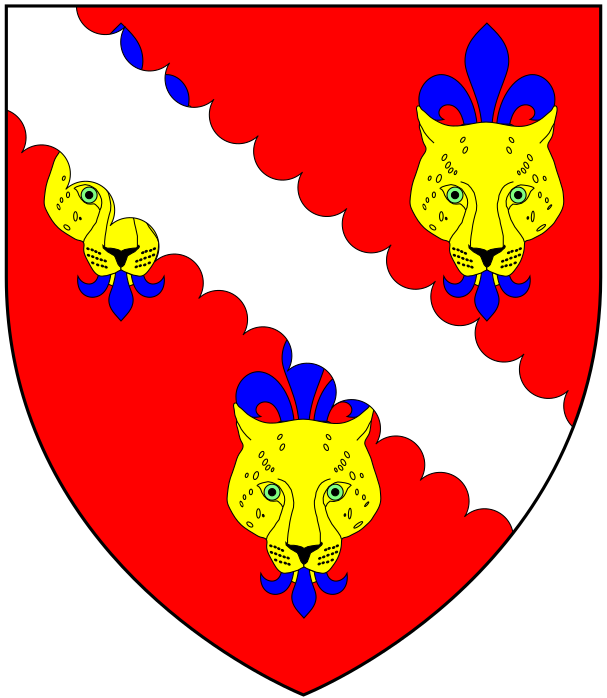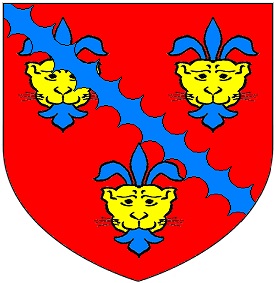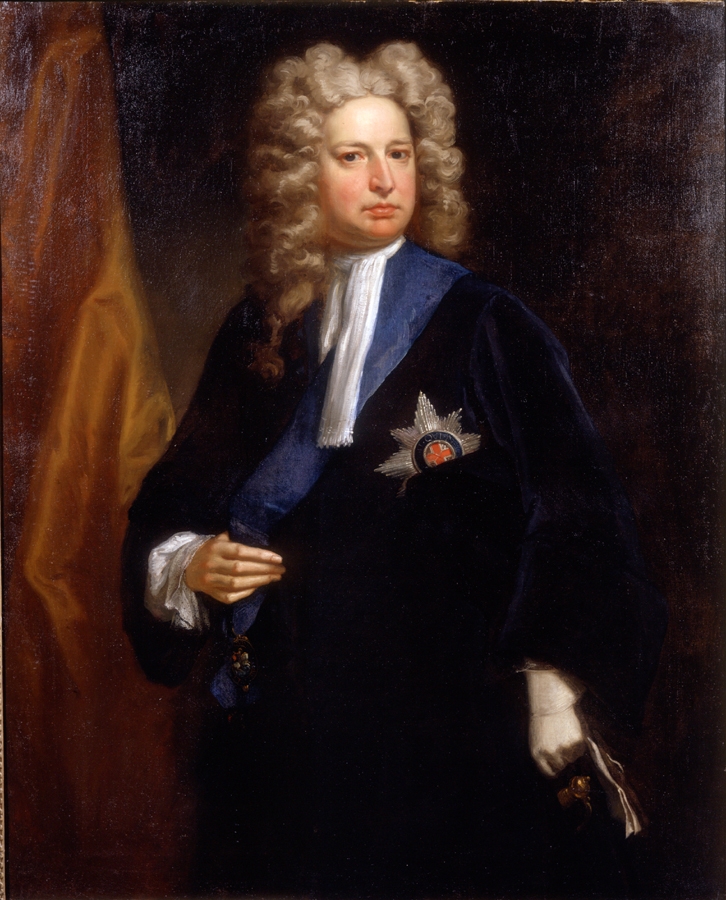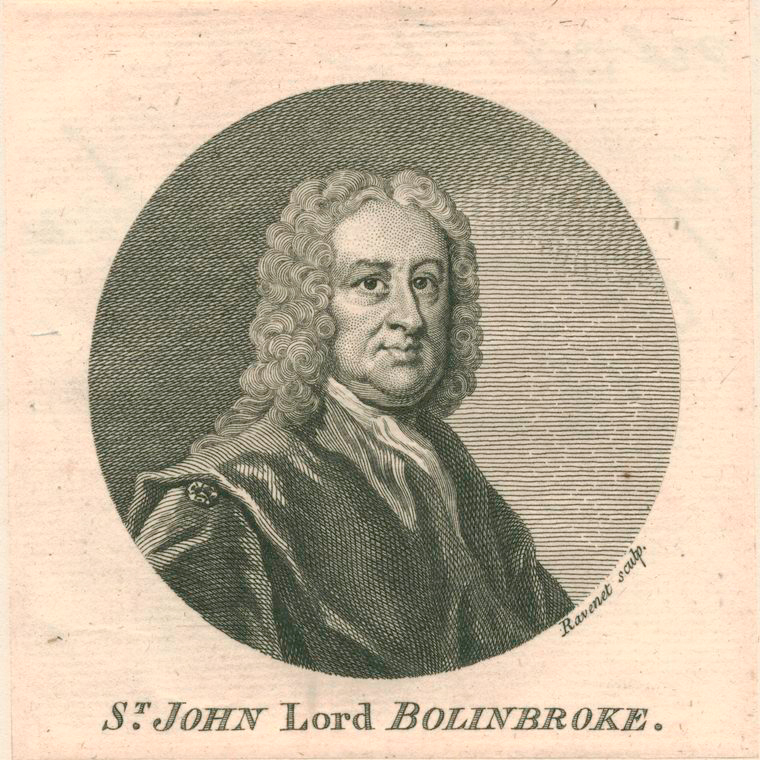|
1714 In Great Britain
Events from the year 1714 in Great Britain. This marks the beginning of the Georgian era. Incumbents * Monarch – Anne (until 1 August), George I (starting 1 August) * Regent – Sir Thomas Parker (starting 1 August, until 18 September) * Parliament – 4th Events * March – the Scriblerus Club, an informal group of literary friends, is formed by Jonathan Swift, Alexander Pope, John Gay, John Arbuthnot (at whose London house they meet), Thomas Parnell, Henry St. John and Robert Harley. * 25 March – Archbishop Tenison's School, the world's earliest surviving mixed gender school, is endowed by Thomas Tenison, Archbishop of Canterbury, in Croydon. * 14 April – Queen Anne performs the last touching for the "King's evil". * 19 May – Queen Anne refuses to allow members of the House of Hanover to settle in Britain during her lifetime. * July ** Parliament offers the Longitude prize to anyone who can solve the problem of accurately determining a ship's lon ... [...More Info...] [...Related Items...] OR: [Wikipedia] [Google] [Baidu] |
Flag Of Great Britain (1707-1800)
The flag of Great Britain, commonly known as King's Colours, the first Union Flag, the Union Jack, or the British flag, was used at sea from 1606 and more generally from 1707 to 1801. It was the first flag of Great Britain. It is the precursor to the Union Jack of 1801. The design was ordered by King James VI and I to be used on ships on the high seas, and it subsequently came into use as a national flag following the Treaty of Union and Acts of Union 1707, gaining the status of "the Ensign armorial of Great Britain", the newly created state. It was later adopted by land forces, although the blue of the field used on land-based versions more closely resembled that of the blue of the flag of Scotland. The flag consists of the red cross of Saint George, patron saint of England, superimposed on the Saltire of Saint Andrew, patron saint of Scotland. Its correct proportions are 3:5. The blue field on the flag was sky blue at first, but over time, the blue began to darken. The flag ... [...More Info...] [...Related Items...] OR: [Wikipedia] [Google] [Baidu] |
John Gay
John Gay (30 June 1685 – 4 December 1732) was an English poet and dramatist and member of the Scriblerus Club. He is best remembered for ''The Beggar's Opera'' (1728), a ballad opera. The characters, including Captain Macheath and Polly Peachum, became household names.. Early life Gay was born in Barnstaple, England, last of five children of William Gay (died 1695) and Katherine (died 1694), daughter of Jonathan Hanmer, "the leading Nonconformist divine of the town" as founder of the Independent Dissenting congregation in Barnstaple. The Gay family- "fairly comfortable... though far from rich"- lived in "a large house, called the Red Cross, on the corner of Joy Street". The Gay family was "of respectable antiquity" in North Devon, associated with the manor of Goldsworthy at Parkham and with the parish of Frithelstock (where the senior line remained, resident at the priory Cloister Hall with its lands, until 1823) and became "powerful and numerous" in the town, "established a ... [...More Info...] [...Related Items...] OR: [Wikipedia] [Google] [Baidu] |
House Of Hanover
The House of Hanover (german: Haus Hannover), whose members are known as Hanoverians, is a European royal house of German origin that ruled Hanover, Great Britain, and Ireland at various times during the 17th to 20th centuries. The house originated in 1635 as a cadet branch of the House of Brunswick-Lüneburg, growing in prestige until Hanover became an Electorate in 1692. George I became the first Hanoverian monarch of Great Britain and Ireland in 1714. At Queen Victoria's death in 1901, the throne of the United Kingdom passed to her eldest son Edward VII, a member of the House of Saxe-Coburg and Gotha. The last reigning members of the House lost the Duchy of Brunswick in 1918 when Germany became a republic. The formal name of the house was the House of Brunswick-Lüneburg, Hanover line. The senior line of Brunswick-Lüneburg, which ruled Brunswick-Wolfenbüttel, became extinct in 1884. The House of Hanover is now the only surviving branch of the House of Welf, which is t ... [...More Info...] [...Related Items...] OR: [Wikipedia] [Google] [Baidu] |
King's Evil
The disease mycobacterial cervical lymphadenitis, also known as scrofula and historically as king's evil, involves a lymphadenitis of the cervical lymph nodes associated with tuberculosis as well as nontuberculous (atypical) mycobacteria. Disease Scrofula is the term used for lymphadenopathy of the neck, usually as a result of an infection in the lymph nodes, known as lymphadenitis. It can be caused by tuberculous or nontuberculous mycobacteria. About 95% of the scrofula cases in adults are caused by ''Mycobacterium tuberculosis'', most often in immunocompromised patients (about 50% of cervical tuberculous lymphadenopathy). In immunocompetent children, scrofula is often caused by atypical mycobacteria (''Mycobacterium scrofulaceum)'' and other nontuberculous mycobacteria (NTM). Unlike the adult cases, only 8% of cases in children are tuberculous. With the stark decrease of tuberculosis in the second half of the 20th century, scrofula became a less common disease in adults, but re ... [...More Info...] [...Related Items...] OR: [Wikipedia] [Google] [Baidu] |
Touch Piece
A touch piece is a coin or medal believed to cure disease, bring good luck, influence people's behaviour, carry out a specific practical action, etc. What most touch pieces have in common is that they have to be touched or in close physical contact for the 'power' concerned to be obtained and/or transferred. Once this is achieved, the power is assumed to be permanently present in the coin, which effectively becomes an amulet. Cure of diseases by coins Coins which had been given at Holy Communion could be rubbed on parts of the body suffering from rheumatism and it was thought that they would effect a cure. Medallions or medalets showing the "Devil defeated" were specially minted in Britain and distributed amongst the poor in the belief that they would reduce disease and sickness.Waring, Philippa (1987). ''The Dictionary of Omens & Superstitions''. Treasure Press. The tradition of touch pieces goes back to the time of Ancient Rome, when the Emperor Vespasian (69–79 AD) gave coins ... [...More Info...] [...Related Items...] OR: [Wikipedia] [Google] [Baidu] |
Croydon
Croydon is a large town in south London, England, south of Charing Cross. Part of the London Borough of Croydon, a local government district of Greater London. It is one of the largest commercial districts in Greater London, with an extensive shopping district and night-time economy. The entire town had a population of 192,064 as of 2011, whilst the wider borough had a population of 384,837. Historically an ancient parish in the Wallington hundred of Surrey, at the time of the Norman conquest of England Croydon had a church, a mill, and around 365 inhabitants, as recorded in the Domesday Book of 1086. Croydon expanded in the Middle Ages as a market town and a centre for charcoal production, leather tanning and brewing. The Surrey Iron Railway from Croydon to Wandsworth opened in 1803 and was an early public railway. Later 19th century railway building facilitated Croydon's growth as a commuter town for London. By the early 20th century, Croydon was an important industria ... [...More Info...] [...Related Items...] OR: [Wikipedia] [Google] [Baidu] |
Archbishop Of Canterbury
The archbishop of Canterbury is the senior bishop and a principal leader of the Church of England, the ceremonial head of the worldwide Anglican Communion and the diocesan bishop of the Diocese of Canterbury. The current archbishop is Justin Welby, who was enthroned at Canterbury Cathedral on 21 March 2013. Welby is the 105th in a line which goes back more than 1400 years to Augustine of Canterbury, the "Apostle to the English", sent from Rome in the year 597. Welby succeeded Rowan Williams. From the time of Augustine until the 16th century, the archbishops of Canterbury were in full communion with the See of Rome and usually received the pallium from the pope. During the English Reformation, the Church of England broke away from the authority of the pope. Thomas Cranmer became the first holder of the office following the English Reformation in 1533, while Reginald Pole was the last Roman Catholic in the position, serving from 1556 to 1558 during the Counter-Reformation. ... [...More Info...] [...Related Items...] OR: [Wikipedia] [Google] [Baidu] |
Thomas Tenison
Thomas Tenison (29 September 163614 December 1715) was an English church leader, Archbishop of Canterbury from 1694 until his death. During his primacy, he crowned two British monarchs. Life He was born at Cottenham, Cambridgeshire, the son and grandson of Anglican clergymen, who were both named John Tenison; his mother was Mercy Dowsing. He was educated at Norwich School, going on to Corpus Christi College, Cambridge, as a scholar on Archbishop Matthew Parker's foundation. He graduated in 1657, and was chosen fellow in 1659. For a short time he studied medicine, but in 1659 was privately ordained. As curate of St Andrew the Great, Cambridge from 1662, he set an example by his devoted attention to the sufferers from the plague. In 1667 he was presented to the living of Holywell-cum-Needingworth, Huntingdonshire, by the Earl of Manchester, to whose son he had been tutor, and in 1670 to that of St Peter Mancroft, Norwich. In 1680 he received the degree of Doctor of Divinity, an ... [...More Info...] [...Related Items...] OR: [Wikipedia] [Google] [Baidu] |
Archbishop Tenison's Church Of England High School, Croydon
Archbishop Tenison's Church of England High School, commonly known as Tenison's, is a co-educational 11-18, voluntary aided, school in the London Borough of Croydon, England, part of the educational provision of the Anglican Diocese of Southwark and Croydon Council. It is a specialist Mathematics and Computing College. History Several schools were founded by Thomas Tenison, an educational philanthropist, in the late 17th and early 18th centuries. In 1714, Tenison, by then Archbishop of Canterbury, founded a school for some “ten poor boys and ten poor girls” on a site which is now close to Croydon’s shopping centre. Just over 300 years and three sites later, it is thought that the School is the oldest surviving mixed-sex school in the world. Due to the hostilities of the Second World War, the School was moved away from the dangers of the Blitz in South London and relocated to Craigmore Hall in the countryside near Crowborough, East Sussex, with pupils evacuated and billete ... [...More Info...] [...Related Items...] OR: [Wikipedia] [Google] [Baidu] |
Oxford Dictionary Of National Biography
The ''Dictionary of National Biography'' (''DNB'') is a standard work of reference on notable figures from British history, published since 1885. The updated ''Oxford Dictionary of National Biography'' (''ODNB'') was published on 23 September 2004 in 60 volumes and online, with 50,113 biographical articles covering 54,922 lives. First series Hoping to emulate national biographical collections published elsewhere in Europe, such as the '' Allgemeine Deutsche Biographie'' (1875), in 1882 the publisher George Smith (1824–1901), of Smith, Elder & Co., planned a universal dictionary that would include biographical entries on individuals from world history. He approached Leslie Stephen, then editor of the ''Cornhill Magazine'', owned by Smith, to become the editor. Stephen persuaded Smith that the work should focus only on subjects from the United Kingdom and its present and former colonies. An early working title was the ''Biographia Britannica'', the name of an earlier eightee ... [...More Info...] [...Related Items...] OR: [Wikipedia] [Google] [Baidu] |
Robert Harley, 1st Earl Of Oxford And Mortimer
Robert Harley, 1st Earl of Oxford and Earl Mortimer, KG PC FRS (5 December 1661 – 21 May 1724) was an English statesman and peer of the late Stuart and early Georgian periods. He began his career as a Whig, before defecting to a new Tory ministry. He was raised to the peerage of Great Britain as an earl in 1711. Between 1711 and 1714 he served as Lord High Treasurer, effectively Queen Anne's chief minister. He has been called a ''prime minister'', although it is generally accepted that the de facto first minister to be a prime minister was Robert Walpole in 1721. The central achievement of Harley's government was the negotiation of the Treaty of Utrecht with France in 1713, which brought an end to twelve years of English and Scottish involvement in the War of the Spanish Succession. In 1714 Harley fell from favour following the accession of the first monarch of the House of Hanover, George I, and was for a time imprisoned in the Tower of London by his political enemies. ... [...More Info...] [...Related Items...] OR: [Wikipedia] [Google] [Baidu] |
Henry St John, 1st Viscount Bolingbroke
Henry St John, 1st Viscount Bolingbroke (; 16 September 1678 – 12 December 1751) was an English politician, government official and political philosopher. He was a leader of the Tories, and supported the Church of England politically despite his antireligious views and opposition to theology.See e.g., Henry St. John Viscount Bolingbroke, "Letters or Essays Addressed to Alexander Pope: Introduction"''The Works of Lord Bolingbroke: With a Life, Prepared Expressly for This Edition, Containing Additional Information Relative to His Personal and Public Character,'' (Philadelphia: Carey and Hart, 1841) Vol 3, pp. 40–64. Also available on Project Gutenberg as "Letter to Alexander Pope" i ''Letters to Sir William Windham and Mr. Pope''D'Holbach, Baronparagraph 206 He supported the Jacobite rebellion of 1715 which sought to overthrow the new king George I. Escaping to France he became foreign minister for the Pretender. He was attainted for treason, but reversed course and was ... [...More Info...] [...Related Items...] OR: [Wikipedia] [Google] [Baidu] |





